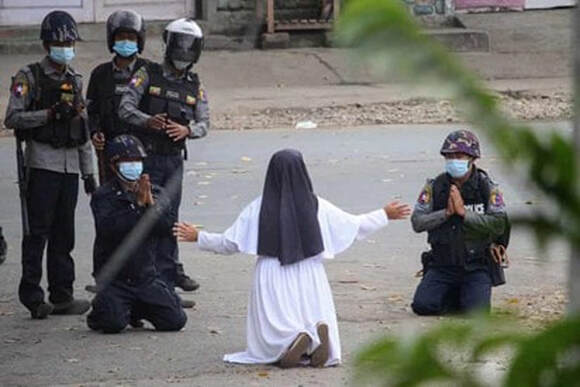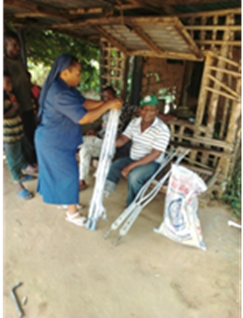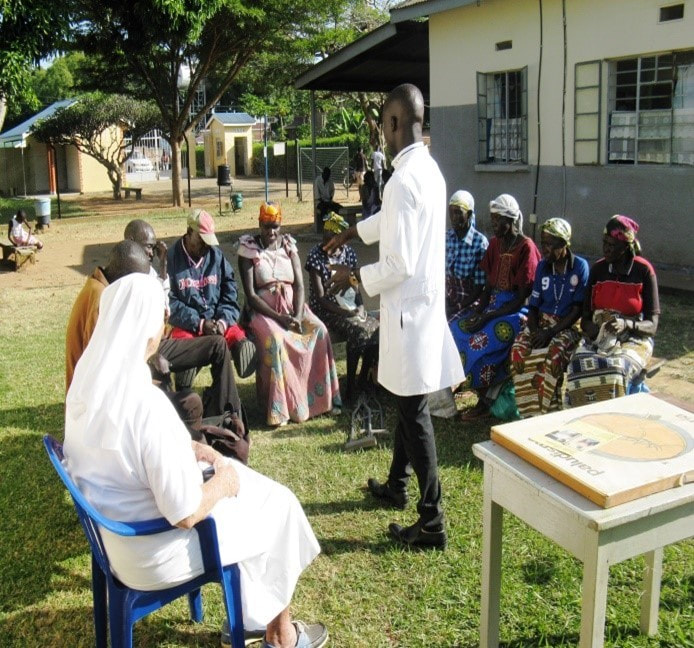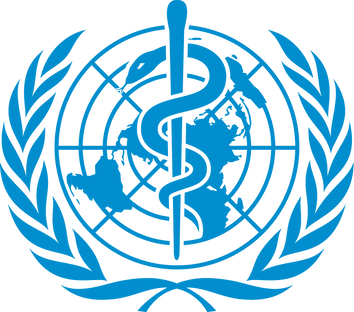NEWS UPDATE
Date: 12 May 2021
Date: 12 May 2021
International Nurses Day Wednesday 12 May 2021
Our unsung heroes - Catholic missionary nuns
Our unsung heroes - Catholic missionary nuns
It is humbling to think that, throughout the world, in remote or poverty-stricken locations, Catholic missionary nuns, without publicity or applause, are quietly nursing the sick and the poor back to health.
Well-known nuns that spring to mind include those who saved the Von Trapp family from the Nazis in The Sound of Music or, the talented art historian, Sister Wendy Beckett. But most Catholic missionary nuns are not in the public eye. Probably the best-known Catholic missionary nun in recent times, is Mother Teresa, founder of the Order of Missionaries of Charity and much-loved confidante of Diana, Princess of Wales.
Well-known nuns that spring to mind include those who saved the Von Trapp family from the Nazis in The Sound of Music or, the talented art historian, Sister Wendy Beckett. But most Catholic missionary nuns are not in the public eye. Probably the best-known Catholic missionary nun in recent times, is Mother Teresa, founder of the Order of Missionaries of Charity and much-loved confidante of Diana, Princess of Wales.
It is not about how much you do, but how much love you put into what you do that counts.” Mother Teresa
More recently, there have been scenes of terrible violence in Myanmar. Sister Ann Rose Ny Twang went down on her knees in front of policemen in the northern Myanmar town of Myitkyina. She pleaded with them to stop shooting protesters in March’s coup. Ultimately and despite assurances to the contrary, two protesters were brutally killed, and several others injured.
Our clinic floor became a sea of blood. We need to value life. It made me feel so sad. Sister Twang who runs a clinic in the town of Myitkyina. Sister Ann Rose Ny Twang
So, today, on International Nurses Day, we are delighted to applaud these dedicated Catholic missionary nuns, who commit their lives to nursing the sick and in the service of others.
Throughout its history and as part of its operating strategy, SFLG has partnered with several Catholic Orders; missionary nuns who devote their careers to nursing people affected by leprosy.
Throughout its history and as part of its operating strategy, SFLG has partnered with several Catholic Orders; missionary nuns who devote their careers to nursing people affected by leprosy.
It is impossible to quantify how much our dedicated Catholic missionary nuns have transformed lives, caring for people with leprosy and leprosy stigma. Their legacy of love and care is immeasurable and, thank heavens, continues unceasingly. We feel privileged to support the great work of these unsung heroes” SFLG, Chief Executive Officer, Clare McIntosh.
Our respect, appreciation and thanks go to the following Catholic Missionary Orders:
- Jimma Daughters of Charity, Leprosy Centre, Ethiopia
- Daughters of Charity of St Vincent de Paul, Holy Family Hansenorium, India.
- Assisi Sisters of Mary Immaculate, LCU Pushpa Hospital, India.
- Missionary Sisters of the Immaculate Heart of Mary, Poorna Sukha Leprosy Project, India.
- Sisters of St Joseph Cluny, St Rock’s Hospital, India.
- Assisi Sisters of Mary Immaculate, St Catald Dermatological Centre, India.
- Franciscan Missionaries of Mary, St Joseph’s Leprosy Hospital, India.
- Salesian Missionaries of Mary Immaculate, Sacred Heart Leprosy Centre, India
- Congregation of Samaritan Sisters, Dhori Mata Samaritan Seva Kendra, India.
- Missionary Sisters of St Theresa Of The Child Jesus, Ganta Rehabilitation Centre, Liberia.
- Sisters of Our Lady of the Missions, St Theresa Orphanage and Leprosy Colony, Myanmar.
- Medical Missionaries of Mary, St Patricks Hospital, Mile Four Hospital, Nigeria.
- The Daughters of Charity of St Vincent de Paul, Marian Home, Nigeria.
- Comboni Missionary Sisters, Ediofe Health Centre, Uganda.
- Little Sisters of St Francis of Assisi, St Francis Hospital, Buluba and Nyenga, Uganda
- Franciscan Missionaries of Mary, Badulla Centre, Hendala Centre and Manthivu Centre, Sri Lanka.
Thank you very much for the interest that you are showing to help our needy brethren. May God bless all of us in spreading His compassion & love through our dedicated services. " Lovingly in Christ, Sister Doctor Ancily, Assisi Sisters of Mary Immaculate, India
Chronic tropical ulcers caused by leprosy, if left untreated, may lead to the loss of limbs and amputation. Leprosy ulcers do not readily heal, especially in a tropical climate, even when leprosy infection has been treated. Untreated ulcers may also be the cause of leprosy stigma. Missionary nuns may spend a lifetime cleaning and dressing ulcers caused by leprosy.
Effective, compassionate, Christian care is hard to beat.” Dr Gosia Brykczyńska, RN/RSCN, European President of The International Association of Catholic Nurses (SICIAMS), SFLG Trustee.
For more information or interview opportunities please contact:
Clare McIntosh
Chief Executive Officer
St Francis Leprosy Guild
London W10 6EJ
Tel: +44 (0)7754 592240
Email: [email protected]
Twitter @StLeprosy
Facebook
Clare McIntosh
Chief Executive Officer
St Francis Leprosy Guild
London W10 6EJ
Tel: +44 (0)7754 592240
Email: [email protected]
Twitter @StLeprosy
About St Francis Leprosy Guild (SFLG)
SFLG is a UK-based, Catholic charity that is working towards a -leprosy-free world. We support the work of over 40 leprosy centres, clinics, hospitals, care homes and leprosy-related projects. We work in 15 countries worldwide in Africa, Asia and South America where leprosy is endemic.
About leprosy
1. What is leprosy?
Leprosy (also known as Hansen’s disease) is a complex, chronic neglected tropical disease caused by the Mycobacterium leprae bacterium. It affects the skin, the upper respiratory tract and peripheral nerves in the hands and feet, and the eyes. Leprosy can affect anyone, at any age, but it is linked to poverty, malnutrition, and genetic susceptibility.
Leprosy remains an important health problem in low and middle-income countries worldwide.
2. How is leprosy transmitted?
It is thought that leprosy is transmitted via droplets from the nose combined with prolonged, close contact with infected individuals.
3. How is leprosy diagnosed?
Leprosy is difficult to diagnose at its early stages, but it often presents as numb patches on the skin. Currently, the most reliable method to diagnose leprosy, is a slit-skin-smear test in the laboratory.
Leprosy may incubate for up to twenty years before presenting with any signs. If leprosy remains undiagnosed like this, the person affected may unwillingly transmit the disease throughout a community. However, within a short period of receiving multidrug therapy, a person affected by leprosy will no longer be infectious. If leprosy is diagnosed in its early stages, it can be treated readily, and it will not cause disabilities. Preventing disabilities from developing means people with leprosy are less likely to suffer from the stigma and discrimination that can destroy their livelihoods and entire lives.
4. How infectious is leprosy?
95% of most populations have a natural immunity to leprosy. The remaining 5% become vulnerable, mainly through poor nutrition, poor living conditions, lack of hygiene and a weakened immune system. Leprosy is not hereditary.
5. Why are people with leprosy often so disfigured?
People with leprosy lose all feeling in the affected areas and as a result, there is diminished awareness of harm from trauma or heat. Without treatment, the lack of sensation can lead to permanent damage to skin, nerves, limbs, and eyes. It can also lead to the development of reoccurring, lifelong, hard-to- treat ulcers.
6. Is there a cure? How is leprosy treated?
Leprosy can be cured using multidrug therapy (MDT), available at no cost to patients from the World Health Organization. If MDT is taken in the early stages of the disease, permanent damage to nerves is completely avoided.
7. How many are affected by leprosy in the world today?
The latest *WHO statistics reveal that in 2019 there were 202,185 new cases of leprosy diagnosed. Of concern and indicating ongoing transmission, the number of children newly detected was nearly 15,000.
These statistics do not account for those people who have leprosy with no symptoms or, who are not diagnosed and are unwittingly transmitting it to their communities. In addition, the statistics do not include those individuals who have been treated for leprosy, but whose disabilities, caused by leprosy need ongoing healthcare needs, or those who are subject to leprosy stigma and discrimination.
8. Which countries have leprosy, where is leprosy endemic?
*The WHO has identified 23 global priority countries for leprosy, where 95.9% of the global total of people detected with leprosy are found. The 23 countries are: Angola, Bangladesh, Brazil, Comoros, Cote Ivoire, DR Congo, Egypt, Ethiopia, India, Indonesia, Kiribati, Madagascar, Micronesia, Mozambique, Myanmar, Nepal, Nigeria, Philippines, South Sudan, Sri Lanka, Sudan, Somalia and Tanzania.
The highest number of people newly detected with leprosy in 2019 live in India with 114,451, followed by Brazil with 27,863 and Indonesia with 17,439.
*WHO Weekly epidemiological record, Global Leprosy Update 4 September 2020, 36, 2020, 95, 417-440
SFLG is a UK-based, Catholic charity that is working towards a -leprosy-free world. We support the work of over 40 leprosy centres, clinics, hospitals, care homes and leprosy-related projects. We work in 15 countries worldwide in Africa, Asia and South America where leprosy is endemic.
About leprosy
1. What is leprosy?
Leprosy (also known as Hansen’s disease) is a complex, chronic neglected tropical disease caused by the Mycobacterium leprae bacterium. It affects the skin, the upper respiratory tract and peripheral nerves in the hands and feet, and the eyes. Leprosy can affect anyone, at any age, but it is linked to poverty, malnutrition, and genetic susceptibility.
Leprosy remains an important health problem in low and middle-income countries worldwide.
2. How is leprosy transmitted?
It is thought that leprosy is transmitted via droplets from the nose combined with prolonged, close contact with infected individuals.
3. How is leprosy diagnosed?
Leprosy is difficult to diagnose at its early stages, but it often presents as numb patches on the skin. Currently, the most reliable method to diagnose leprosy, is a slit-skin-smear test in the laboratory.
Leprosy may incubate for up to twenty years before presenting with any signs. If leprosy remains undiagnosed like this, the person affected may unwillingly transmit the disease throughout a community. However, within a short period of receiving multidrug therapy, a person affected by leprosy will no longer be infectious. If leprosy is diagnosed in its early stages, it can be treated readily, and it will not cause disabilities. Preventing disabilities from developing means people with leprosy are less likely to suffer from the stigma and discrimination that can destroy their livelihoods and entire lives.
4. How infectious is leprosy?
95% of most populations have a natural immunity to leprosy. The remaining 5% become vulnerable, mainly through poor nutrition, poor living conditions, lack of hygiene and a weakened immune system. Leprosy is not hereditary.
5. Why are people with leprosy often so disfigured?
People with leprosy lose all feeling in the affected areas and as a result, there is diminished awareness of harm from trauma or heat. Without treatment, the lack of sensation can lead to permanent damage to skin, nerves, limbs, and eyes. It can also lead to the development of reoccurring, lifelong, hard-to- treat ulcers.
6. Is there a cure? How is leprosy treated?
Leprosy can be cured using multidrug therapy (MDT), available at no cost to patients from the World Health Organization. If MDT is taken in the early stages of the disease, permanent damage to nerves is completely avoided.
7. How many are affected by leprosy in the world today?
The latest *WHO statistics reveal that in 2019 there were 202,185 new cases of leprosy diagnosed. Of concern and indicating ongoing transmission, the number of children newly detected was nearly 15,000.
These statistics do not account for those people who have leprosy with no symptoms or, who are not diagnosed and are unwittingly transmitting it to their communities. In addition, the statistics do not include those individuals who have been treated for leprosy, but whose disabilities, caused by leprosy need ongoing healthcare needs, or those who are subject to leprosy stigma and discrimination.
8. Which countries have leprosy, where is leprosy endemic?
*The WHO has identified 23 global priority countries for leprosy, where 95.9% of the global total of people detected with leprosy are found. The 23 countries are: Angola, Bangladesh, Brazil, Comoros, Cote Ivoire, DR Congo, Egypt, Ethiopia, India, Indonesia, Kiribati, Madagascar, Micronesia, Mozambique, Myanmar, Nepal, Nigeria, Philippines, South Sudan, Sri Lanka, Sudan, Somalia and Tanzania.
The highest number of people newly detected with leprosy in 2019 live in India with 114,451, followed by Brazil with 27,863 and Indonesia with 17,439.
*WHO Weekly epidemiological record, Global Leprosy Update 4 September 2020, 36, 2020, 95, 417-440









